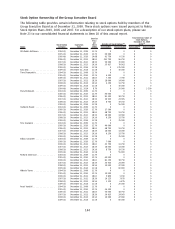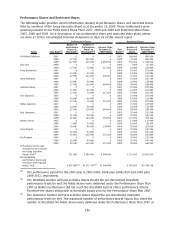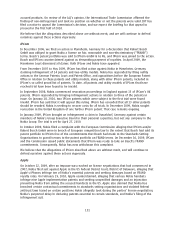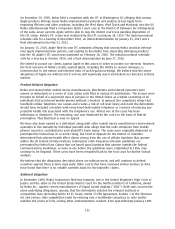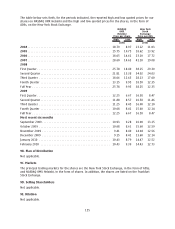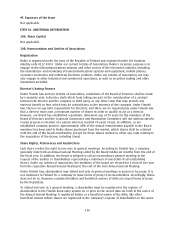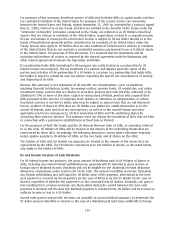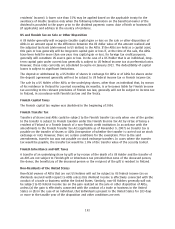Nokia 2009 Annual Report Download - page 154
Download and view the complete annual report
Please find page 154 of the 2009 Nokia annual report below. You can navigate through the pages in the report by either clicking on the pages listed below, or by using the keyword search tool below to find specific information within the annual report.On December 29, 2009, Nokia filed a complaint with the ITC in Washington, DC alleging that various
Apple products infringe seven Nokia implementation patents and seeking to ban Apple from
importing iPhones and other products, including the iPod Nano, iPod Touch and Macbook, into the US.
Nokia simultaneously filed a companion district court case in the District of Delaware for infringement
of the same seven patents. Apple will be able to stay the district court case pending disposition of
the ITC action. Nokia’s ITC action was instituted by the ITC on January 28, 2010. The initial procedural
schedule calls for a hearing in November 2010, an initial determination by January 31, 2011 and a
final determination by May 31, 2011.
On January 15, 2010, Apple filed its own ITC complaint alleging that various Nokia products infringe
nine Apple implementation patents, and seeking to ban Nokia from importing infringing products
into the US. Apple’s ITC action was instituted on February 18, 2008. The initial procedural schedule
calls for a hearing in October 2010, and a final determination by June 27, 2010.
We intend to pursue our claims against Apple in this action in order to protect our interests. However,
the final outcome of Nokia’s claims against Apple, including the ability to recover damages, is
uncertain due to the nature and inherent risks of such legal proceedings. We believe that the above
allegations of Apple are without merit and we will vigorously assert and defend our interests in these
matters.
Product Related Litigation
Nokia and several other mobile device manufacturers, distributors and network operators were
named as defendants in a series of class action suits filed in various US jurisdictions. The actions were
brought on behalf of a purported class of persons in the United States as a whole consisting of all
individuals that purchased mobile phones without a headset. In general, the complaints allege that
handheld cellular telephone use causes and creates a risk of cell level injury and claim the defendants
should have included a headset with every handheld mobile telephone as a means of reducing any
potential health risk associated with the telephone’s use. All but one of the cases has been
withdrawn or dismissed. The remaining case was dismissed by the court on the basis of federal
preemption. That dismissal is now on appeal.
We have also been named as a defendant along with other mobile device manufacturers and network
operators in five lawsuits by individual plaintiffs who allege that the radio emissions from mobile
phones caused or contributed to each plaintiff’s brain tumor. The cases were originally dismissed as
preempted by federal law. In a recent ruling, the Court of Appeals for the District of Columbia
determined that adverse health effect claims arising from the use of cellular handsets that operate
within the US Federal Communications Commission radio frequency emission guidelines are
preempted by federal law. Claims that are based upon handsets that operate outside the Federal
Communications Guidelines, or were in use before the guidelines were established in 1996, may
continue to be litigated. These cases have been remanded back to the trial court for further factual
analysis.
We believe that the allegations described above are without merit, and will continue to defend
ourselves against these actions vigorously. Other courts that have reviewed similar matters to date
have found that there is no reliable scientific basis for the plaintiffs’ claims.
Antitrust Litigation
In November 2009, Nokia Corporation filed two lawsuits, one in the United Kingdom’s High Court of
Justice and the other in the United States District Court for the Northern District of California, joined
by Nokia Inc., against certain manufacturers of liquid crystal displays (“LCDs”). Both suits concern the
same underlying allegations, namely, that the defendants violated the relevant antitrust or
competition laws (including Article 81 EC Treaty, Article 53 EEA Agreement, Section 1 of the Sherman
Act and various state competition laws) by entering into a worldwide conspiracy to raise and/or
stabilize the prices of LCDs, among other anticompetitive conduct, from approximately January 1996
152




